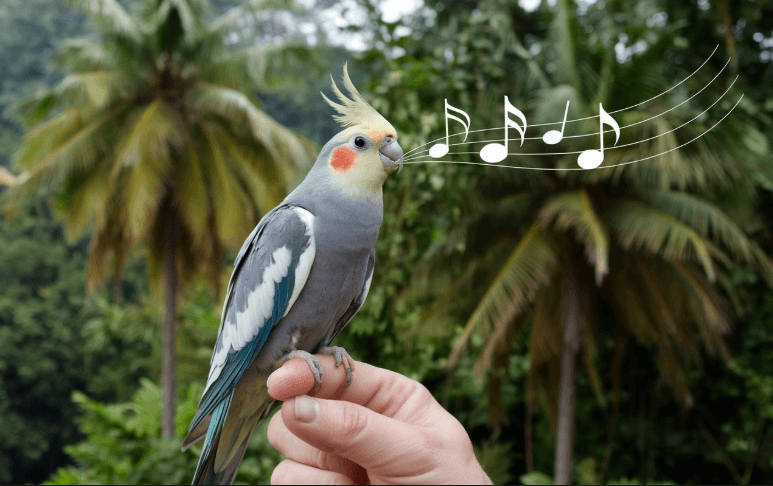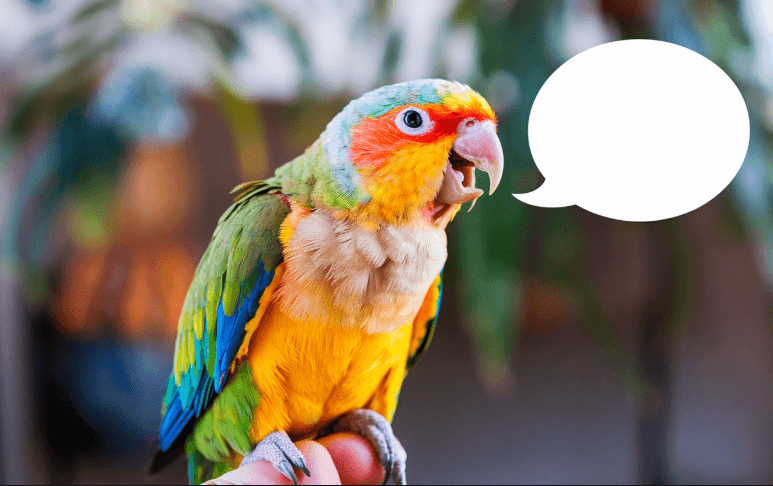Thinking about getting a talking bird? Birds are fascinating pets, and those with the ability to mimic human speech make them even more captivating. While many birds can talk, some species are easier to train and better suited for beginners. In this guide, we’ll explore the best talking pet birds for beginners, their characteristics, training tips, and essential care information to help you choose the perfect feathered companion.
Why Choose a Talking Bird?
Talking birds offer companionship and entertainment. They can mimic human words, phrases, and even household sounds. However, not all talking birds have the same abilities, and their speech skills depend on species, training, and individual personality. Before choosing a talking bird, consider:
- Lifespan: Some birds live for decades, requiring long-term commitment.
- Noise Level: Talking birds can be vocal; some are louder than others.
- Training Requirements: Some birds learn words quickly, while others need patience and consistency.
- Space Needs: Birds need spacious cages and play areas for a healthy lifestyle.
Now, let’s look at the best talking pet birds for beginners!
1. Budgerigar (Budgie)
Scientific Name: Melopsittacus undulatus
Lifespan: 7-15 years
Speech Ability: Excellent (up to 1,000 words)
Budgies are one of the best talking birds for beginners due to their small size, affordability, and friendly nature. These colorful parakeets can develop an impressive vocabulary with training and patience.(Best Talking Pet Birds for Beginners) They are social birds and enjoy interacting with their owners.
Pros:
- Easy to care for
- Highly trainable with consistent interaction
- Affordable and widely available
Cons:
- High-pitched voice may be difficult to understand
- Needs daily socialization to stay tame
2. Indian Ringneck Parakeet
Scientific Name: Psittacula krameri
Lifespan: 20-30 years
Speech Ability: Very Good(Best Talking Pet Birds for Beginners)
Indian Ringnecks are well-known for their clear speech and ability to learn a variety of words and phrases. They are highly intelligent and curious, making them excellent companions. However, they require consistent training to maintain their tameness.
Pros:
- Clear and distinct speech
- Intelligent and interactive
- Can learn full sentences
Cons:
- Can be stubborn; requires regular training
- May go through a bluffing stage during adolescence
3. Quaker Parrot (Monk Parakeet)
Scientific Name: Myiopsitta monachus
Lifespan: 20-30 years
Speech Ability: Excellent (Best Talking Pet Birds for Beginners)
Quaker Parrots are known for their outgoing personalities and strong ability to mimic human speech. They are quick learners and enjoy social interactions, making them great for beginners who can provide daily engagement.
Pros:
- Sociable and affectionate
- Can learn words and phrases quickly
- Adapt well to various environments
Cons:
- Can be territorial if not trained properly
- Banned in some states due to agricultural concerns
4. African Grey Parrot
Scientific Name: Psittacus erithacus
Lifespan: 40-60 years
Speech Ability: Exceptional (Best Talking Pet Birds for Beginners)
African Greys are widely regarded as the most intelligent talking birds. They can learn hundreds of words, phrases, and even understand context. While they are not the easiest for complete beginners, dedicated bird owners willing to invest time in training will find them incredibly rewarding.
Pros:
- Unmatched intelligence and speech ability
- Can understand and use words in context
- Forms deep bonds with owners
Cons:
- Requires mental stimulation to prevent boredom
- Can be emotionally sensitive and prone to stress
5. Cockatiel
Scientific Name: Nymphicus hollandicus
Lifespan: 15-25 years
Speech Ability: Moderate (Best Talking Pet Birds for Beginners)
Cockatiels may not be the best talkers, but they can learn to whistle tunes and say a few words. Their charming personalities and easygoing nature make them excellent for beginners.
Pros:
- Affectionate and easy to train
- Can learn whistles and basic words
- Low maintenance compared to larger parrots
Cons:
- Limited vocabulary
- Prefers whistling over speaking
Tips for Training Your Talking Bird
Training a bird to talk requires patience, consistency, and a positive environment. Follow these tips to enhance your bird’s speech development:
- Start with Simple Words: Use short, clear words like “hello” and “bye.”
- Repeat Consistently: Repetition helps birds memorize words.
- Use Positive Reinforcement: Reward them with treats and praise.
- Engage Daily: Talk to your bird regularly to encourage speech.
- Be Patient: Some birds take longer to learn than others.
Common FAQs About Talking Birds
1. Which talking bird is the easiest to train?
Budgies and Quaker Parrots are among the easiest to train due to their social nature and quick learning abilities.
2. Can all parrots talk?
Not all parrots talk, and even among species known for talking, some individuals may never speak.
3. How long does it take for a bird to start talking?
Some birds may start talking within a few months, while others can take a year or longer with consistent training.
4. Do talking birds understand what they say?
While they may not fully grasp meaning, intelligent species like African Greys can use words contextually.
5. How do I encourage my bird to talk?
Frequent interaction, repetition, and rewards are key to encouraging speech development in pet birds.
Conclusion
Choosing the best talking bird as a beginner depends on your lifestyle, patience, and ability to provide training and care. Budgies, Quaker Parrots, and Indian Ringnecks are excellent choices for beginners, while African Greys are ideal for those willing to invest in a long-term commitment. With proper training, love, and care, your talking bird can become a delightful companion that brightens your home with engaging chatter and playful interactions.
Are you ready to welcome a talking bird into your home? Let us know your favorite talking bird species in the comments!













